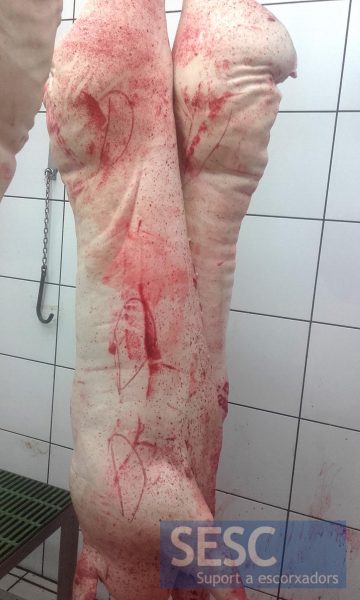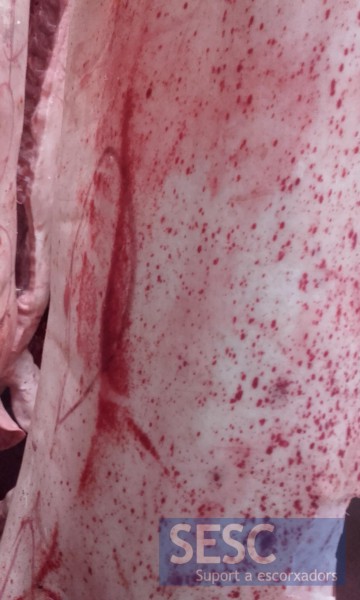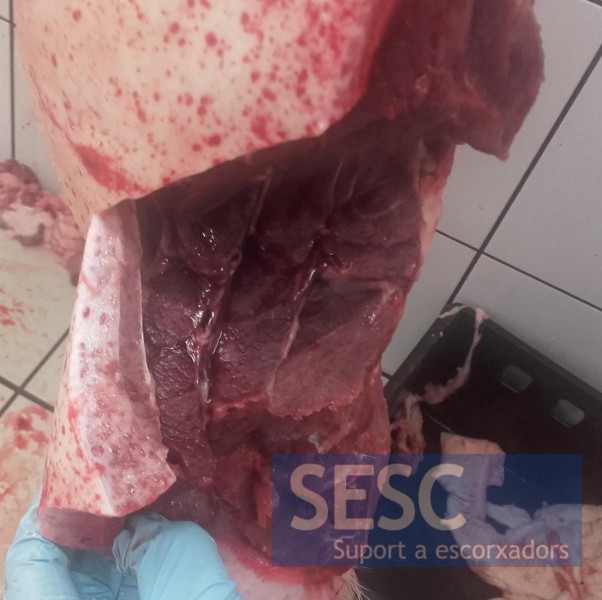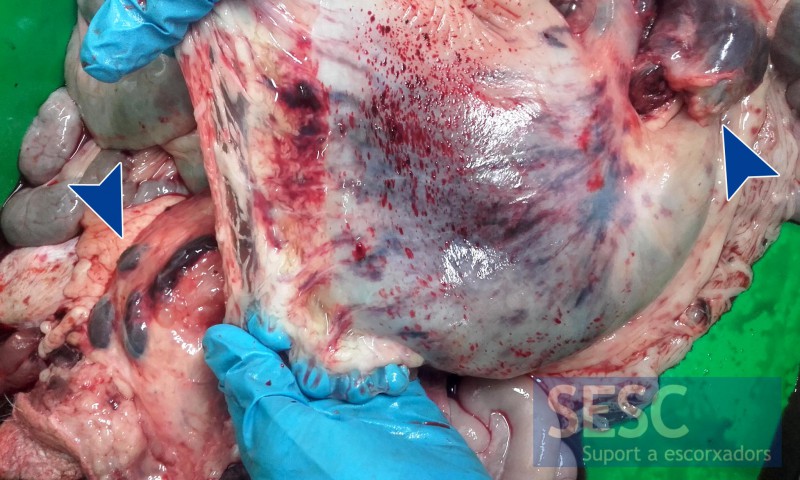Hemorrhagic diathesis in a pig carcass
In a 6 months old, mixed breed, pig carcass multiple hemorrhages (petechiae and ecchymoses) were observed on the skin, thoracic and abdominal cavities serous membranes. The lymph nodes had a haemorrhagic appearance throughout the carcass.
These lesions are indicative of a hemorrhagic diathesis, ie a predisposition to bleeding. It is a nonspecific sign that can have various causes. A number of considerations in this case can help narrow the differential diagnosis:
- Only one animal was involved.
- No abnormalities were detected antemortem (on the holding or at the slaughterhouse).
- The histopathological study of lymph nodes showed that the hemorrhagic appearance of lymph nodes was due to reabsorption of blood and they had no other lesions in lymphoid tissue.
Causes of infectious origin.
The fact that only one animal was found affected and the absence of clinical signs reported antemortem was against this hypothesis, but still cannot be ruled out:
- In a case like this the first thing to suspect is a viral infection. Viruses such as classical swine fever virus (CSFv) or the African swine fever virus (ASFv) can cause images like this. So this diseases should be ruled out by means of RT-PCR and PCR, respectively, to detect viral genome, for example in samples of lymph nodes or tonsils. In this animal both tests gave negative results.
- A generalized bacterial infection or septicemia could also give a picture as observed here. The agents that can cause septicemia in pigs include: Actinobacillus suis, Erisipelothrix rhusiopathiae, Streptococcus spp., Listeria monocytogenes ... In this case, a microbiological culture from samples of spleen, an organ rich in blood, was performed with a negative result.
Other possible causes.
Once infectious ethiologies have been discarded other possible explanations for bleeding and the consequent absorption of blood to the lymph nodes are:
Coagulation disorders (rare in swine):
- Poisoning anticoagulants (warfarin -rodent poison-)
- Thrombocytopenic purpura (usually affects piglets of few days of life)
Bleeding arising during the slaughter process secondary to an abnormal agony.
To read more about causes of erythematous lesions in pig carcasses: Five reasons a pig carcass might turn red.






1 comment(s)
Gracias por vuestro trabajo, resulta muy atractivo i formativo.
Feliz Navidad